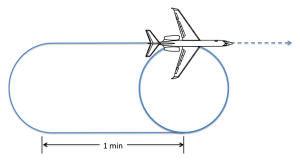Monday Accidents & Lessons Learned: When One Good Turn Definitely Doesn’t Deserve Another

The electronic flight bag (EFB) is rapidly replacing pilots’ conventional papers in the cockpit. While the EFB has demonstrated improved capability to display aviation information—airport charts, weather, NOTAMs, performance data, flight releases, and weight and balance—NASA’s Aviation Safety and Reporting System (ASRS) has received reports that describe various kinds of EFB anomalies, such as this one:
“This B757 Captain received holding instructions during heavy traffic. While manipulating his EFB for clarification, he inadvertently contributed to an incorrect holding entry.
‘[We were] asked to hold at SHAFF intersection due to unexpected traffic saturation. While setting up the FMC and consulting the arrival chart, I expanded the view on my [tablet] to find any depicted hold along the airway at SHAFF intersection. In doing so, I inadvertently moved the actual hold depiction…out of view and [off] the screen.
‘The First Officer and I only recall holding instructions that said to hold northeast of SHAFF, 10-mile legs. I asked the First Officer if he saw any depicted hold, and he said, “No.” We don’t recall instructions to hold as depicted, so not seeing a depicted hold along the airway at SHAFF, we entered a right-hand turn. I had intended to clarify the holding side with ATC, however there was extreme radio congestion and we were very close to SHAFF, so the hold was entered in a right-hand turn.
‘After completing our first 180-degree turn, the controller informed us that the hold at SHAFF was left turns. We said that we would correct our holding side on the next turn. Before we got back to SHAFF for the next turn, we were cleared to [the airport].'”
Volpe National Transportation Systems Center, U.S. Department of Transportation, weighs in on EFBs: “While the promise of EFBs is great, government regulators, potential customers, and industry developers all agree that EFBs raise many human factors considerations that must be handled appropriately in order to realize this promise without adverse effects.”
CALLBACK is the award-winning publication and monthly safety newsletter from NASA’s Aviation Safety Reporting System (ASRS). CALLBACK shares reports, such as the one above, that reveal current issues, incidents, and episodes.
Circumstances can crop up anywhere at any time if proper sequence and procedures are not planned and followed. We encourage you to learn and use the TapRooT® System to find and fix problems. Attend one of our courses. We offer a basic 2-Day Course and an advanced 5-Day Course. You may also contact us about having a course at your site.



